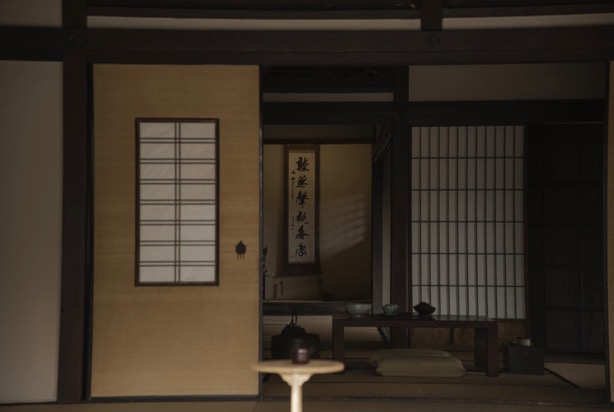Aug 05 (newsonjapan.com) - The architecture and design of Japanese culture are different from Europeans.
Building shape design, interior planning, design, lighting organization are created taking into account several rules. By following them, you can create a comfortable space for body and soul.
Japanese living space design is a set of principles. At first glance, the interior in the Japanese style seems simple and unfinished to us, but it is in this simplicity that the depth lies. The role of every element of form, materials, objects, patterns, and lighting in an interior is important. All of them are interconnected and represent a single ensemble.
10 principles of Japanese architecture: design and lighting
Young architect Yusuki Takahashi highlighted the principles of Japanese architecture that characterize culture and design:
1 - kanso - simplicity
The structure and organization of the Japanese interior are based on "simplicity". It is expressed not only in the objects themselves, but it is also simplicity in the soul. Stick to the principle the simpler the better. You need to see what seems to be nothing - this is how the Japanese approach is expressed. You can find laconic and simple-shaped furniture pieces on nfoutlet.com.
Unlike Europeans, the Japanese believe that true wealth lies in simplicity.
2 - fukinsei - asymmetry
Symmetry is simple and obvious, there is no mystery or understatement in it. Symmetrical lines are too intrusive. Asymmetry is a more flexible tool in a designer's work. After all, an asymmetric object looks different from different sides, which means that the perception from it is different.
Asymmetrical homogeneity makes a simple object coherent and interesting.
3 - shibumi - essence (shibumi)
The Japanese have such concept umami (umami - a pleasant taste), which is distinguished into a separate independent 5th taste. In essence, it is the taste of protein, the feeling of fullness on the tongue. An example of umami is monosodium glutamate, which is used in condiments.
This concept denotes a special delicacy, the calorie content of the interior. A Japanese-style interior should be both laconic and desirable. This "taste" is even made up of details such as the combination of materials and their thickness.

4 - shizen - naturalness
Japanese design involves communication and contact with nature. If we are not talking about a country house, but about an urban interior, then natural motives and greenery should be present in the premises. The people of Japan are inspired by nature, bringing a part of it into their living spaces.
In an ideal Japanese interior, there should be harmony between architecture and landscape. A balance of different plans is needed. For example, if everything is harmonious in the interior, then outside the window there should be no less harmonious garden or landscape.
5 - yugen - understatement in interior and architecture
This concept implies a form of intangible depth. Imagine a window through which you see what is behind it. But we do not see what is behind the walls of the building. Thus, a person in the room has the opportunity to dream up, imagine what is there.
6 - datsuzoku - not a commonplace
This principle says that there should be no repetitions of a specific pattern. The traditional Japanese panel "kumiko" can serve as an example. This is a panel on sliding partitions. The volumetric pattern at different angles and lighting looks original and laconic.
7- seijaku - peace, calm
This is the very state of peace and tranquility that arises in a person's soul in a certain space. For the Japanese, it is important how a person feels when he is in this space. For us Europeans, this is akin to comfort, but not only for the body, but also for the soul.
8 - ma - emptiness (space, space)
In traditional Japanese houses, zoning and organization of space are achieved through sliding partitions. When from an empty single space, rooms appear, which can then be easily transformed and turned into emptiness.
Creating voids between objects is a Japanese approach. The Japanese believe that the details located in the void determine perception.
9 - wabi - scarcity
The Japanese interior should not be oversaturated with objects. There may be one very expensive item, of high quality, against the background of which everything around seems meager. This scarcity is not associated with greed, it is dosage, the possibility of comparison, reflection. Imagine a photograph of falling drops of water from an old tap that create circles on the water- it can be a real representation of this principle.
10 - sabi - solitude (loneliness)
This is the inner feeling that arises when you get into the definition of new space.
A place where you want to escape. It is self-sufficient, you can recharge psychologically in it. The Japanese feel comfortable and secure in a moment of privacy. A place that could evoke such feelings could be an old temple, in which a ray of sun breaks through the silence and windows.
Lighting in Japanese interiors
Japanese interior design and architecture is a connection with nature. Large windows and translucent partitions allow maximum natural light into the room.
Interiors are created taking into account sunlight and what effects it creates in the room. Therefore, in the evening, artificial lighting becomes a substitute for natural lighting. There are no aggressive light spots or overly bright areas in Japanese design. The light is used soft to maintain a balance of creativity and perception.
Japanese design. Lighting Features:
- lamps are minimalistic, simple shapes, made of natural materials (loft-style options are quite suitable)
lamps in Japanese design
- the light is soft, local; transitions of illuminated places and shadows;
- warm light prevails (color temperature 3000-4000K)
- inconspicuous lamps are used (recessed, contour light, eaves lighting, profile systems, compact pendant lamps of simple shapes)
lamps in Japanese design
- the luminaire fulfills a functional task rather than a decorative one;
- with the help of light, texture, important areas, as well as significant objects are highlighted with the help of accent light;
- the rhythm in the interior is emphasized by light















